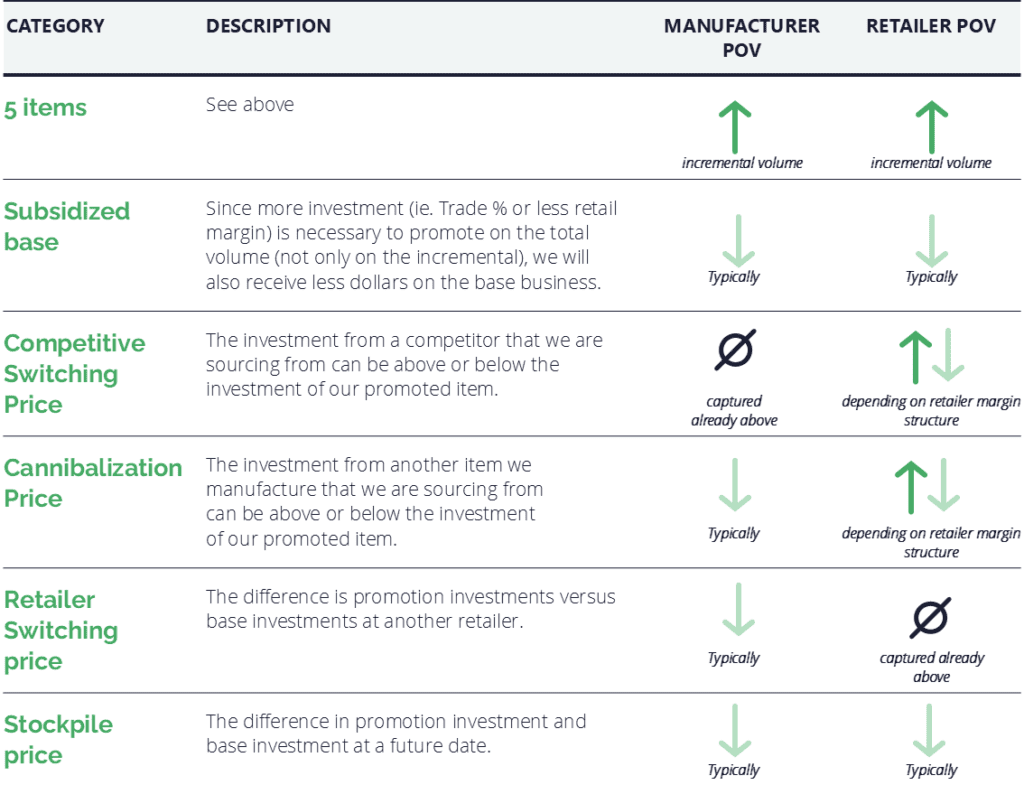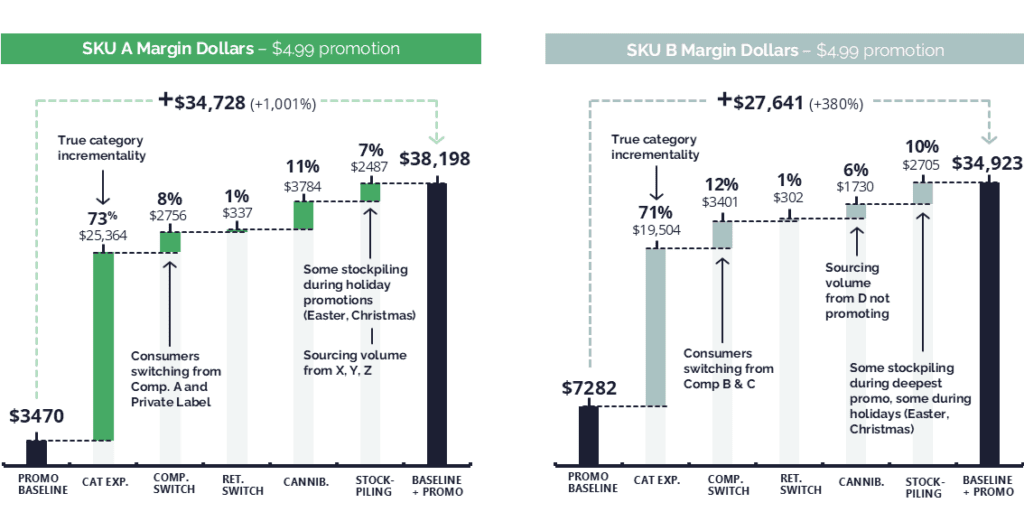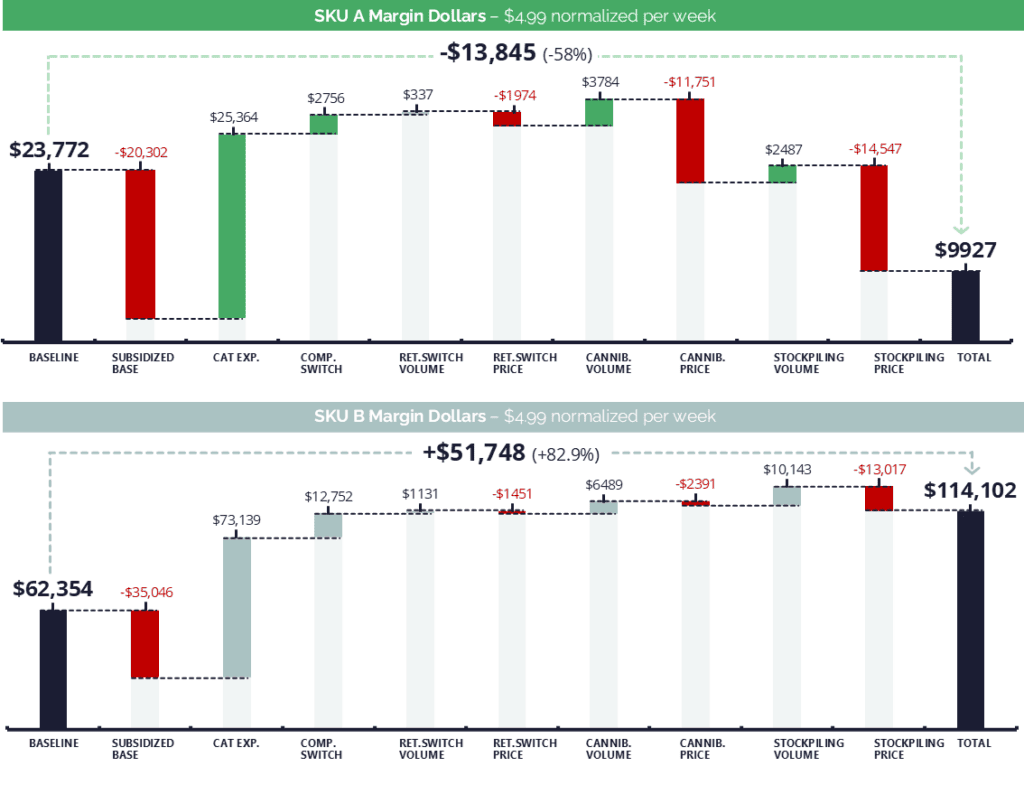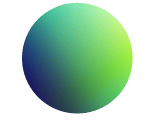Consumers are becoming increasingly price-sensitive, prompting consumer goods companies to adopt aggressive pricing strategies to capture demand and gain market share.
However, traditional promotional analyses often fall short by focusing narrowly on metrics like sales lift, ROI, and profitability, overlooking critical factors such as category-wide impacts, future sales disruptions from stockpiling, and manufacturer-specific considerations.
Promolytics bridges these gaps with a comprehensive, data-driven approach, empowering businesses with deeper insights to optimize promotions effectively.
Introducing Promolytics
Promolytics is a proprietary tool developed by RML to analyze historical sales data and measure the effectiveness of promotions. It offers a comprehensive approach by breaking down the effects of past promotions, accurately identifying market dynamics, and calculating the financial impacts of running promotions. Additionally, Promolytics provides prescriptive steps to help businesses maximize ROI and includes a KPI scorecard for evaluating the success of different promotions.
This powerful tool enables companies to make data-driven decisions that optimize their promotional strategies and drive greater profitability.
Financial Implications of Incrementality
Promolytics goes beyond traditional volume metrics by integrating comprehensive financial perspectives to provide a deeper understanding of promotional impacts. This includes evaluating price to the retailer, cost of goods sold (COGs) for net sales, and detailed insights into both manufacturer and retailer margins. The table below illustrates how financial perspectives are linked to each incrementality driver, offering businesses a holistic view of their promotions:

By incorporating all 10 levers—the five incrementality drivers and their financial perspectives—companies can achieve a true financial understanding of promotions from both retailer and manufacturer viewpoints.
Case Study: Comparing Two Promo Types
Let’s examine two SKUs—A and B—both promoted for five weeks at $4.99 each:
Traditional Analysis:
SKU A shows a 1,001% lift, while SKU B shows a 380% lift.
Promolytics Analysis:
SKU A experiences higher cannibalization, whereas SKU B sees more competitor switching. Despite these differences, both SKUs contribute similarly to category expansion.
Financially, SKU A results in a negative impact compared to baseline due to the high cost of cannibalization, making its promotion unprofitable.


Additional Applications of Promolytics
This example highlights how Promolytics offers deeper insights into promotional performance, moving beyond surface-level metrics to uncover the true dynamics behind each promotion.
When paired with robust data, Promolytics can offer further insights:
Seasonality Analysis:
Compare promotions during different times of the year to capitalize on consumer behaviors (e.g., heightened stockpiling during holidays).Price Point Optimization:
Evaluate the impact of different promotional price points and additional investments like displays or features.Communication Testing:
Determine whether messaging styles (e.g., “$2 OFF” vs. “20% OFF”) drive varying levels of consumer response.
Conclusion
Promolytics was designed to tackle the challenges posed by shifting consumer behaviors and economic uncertainty. By providing a comprehensive understanding of the drivers of promotional incrementality, it enables businesses to make informed decisions, maximize ROI, and uphold fiscal responsibility in a competitive marketplace. With Promolytics, companies can transform promotional complexities into opportunities for sustainable growth.
Learn more about how our experts help CPG businesses enhance market share, revenue, and profitability with real-time insights.




